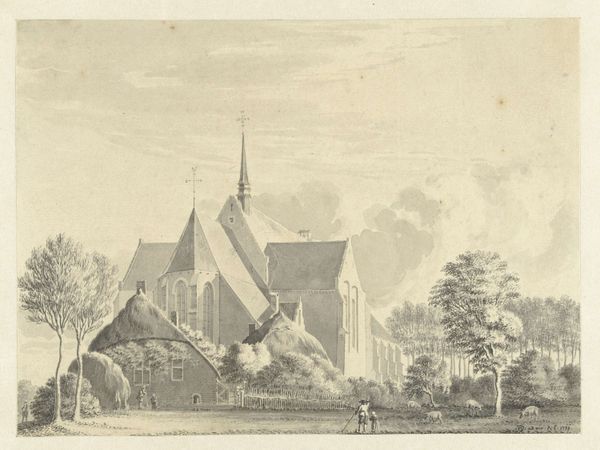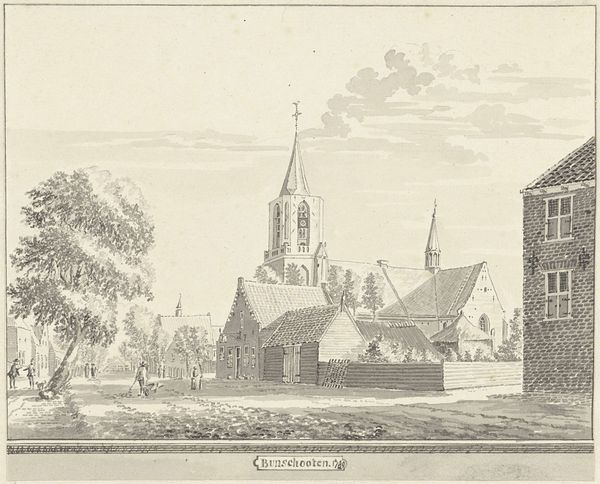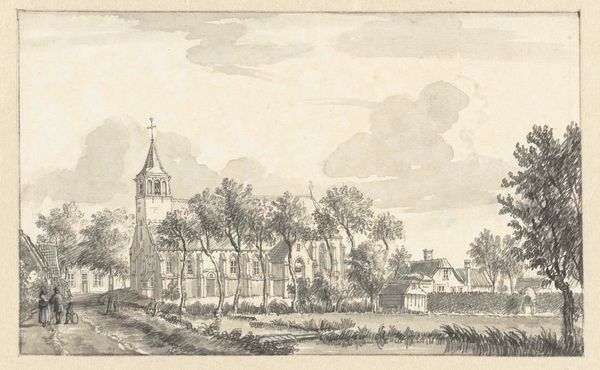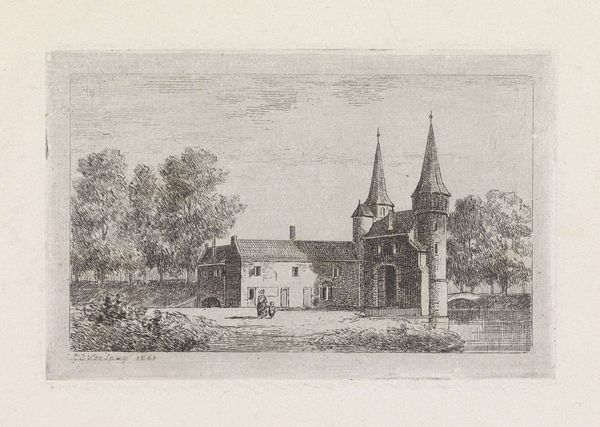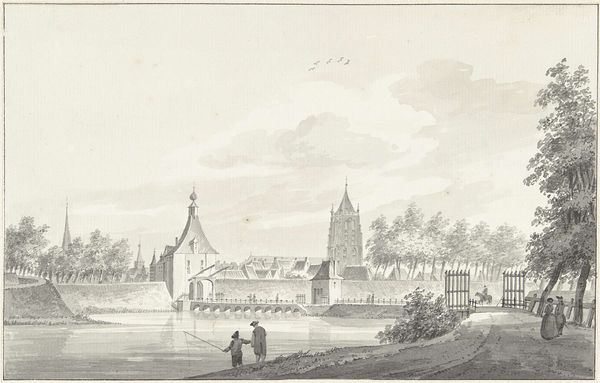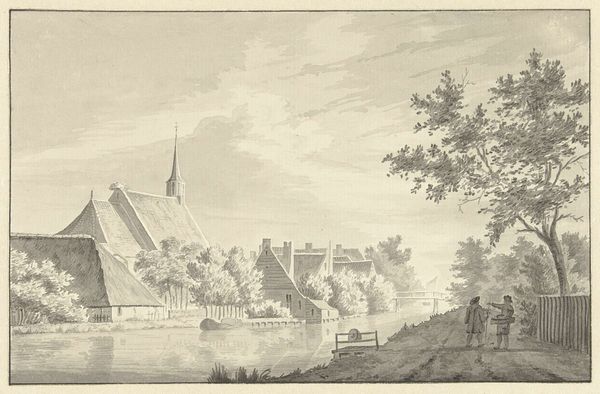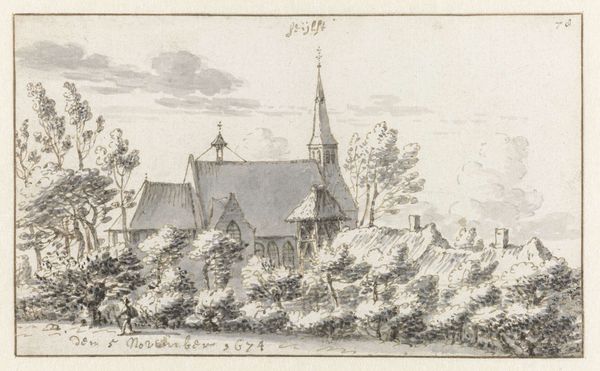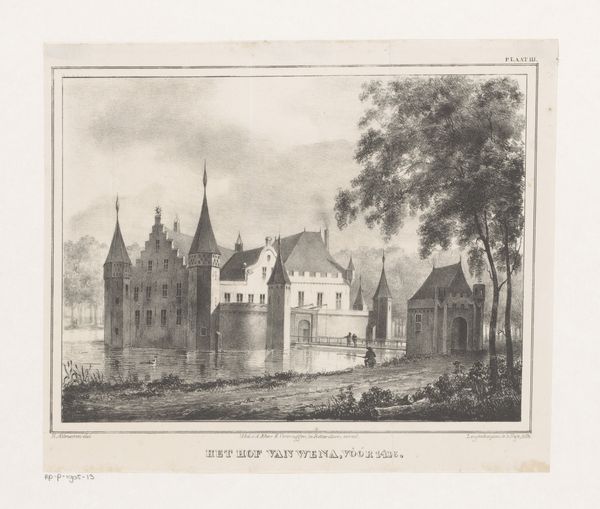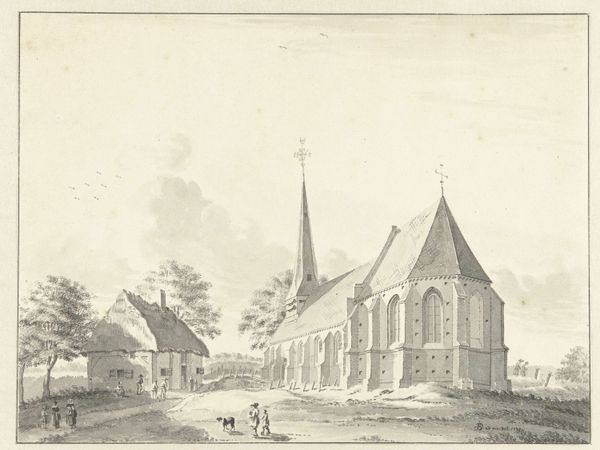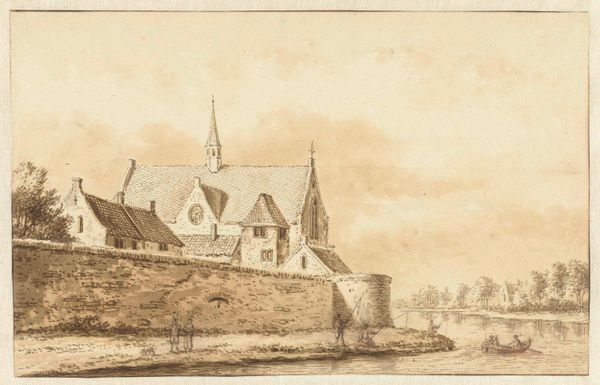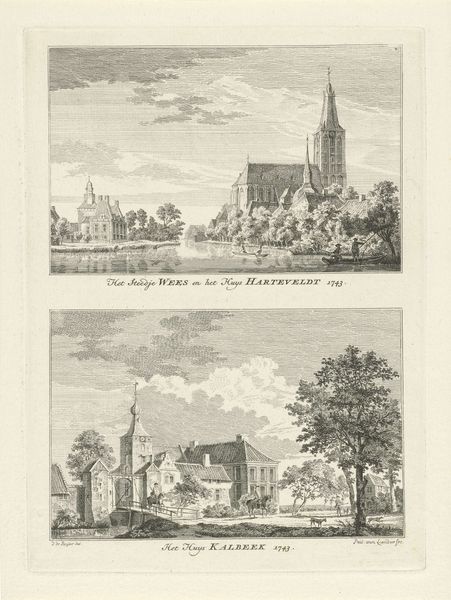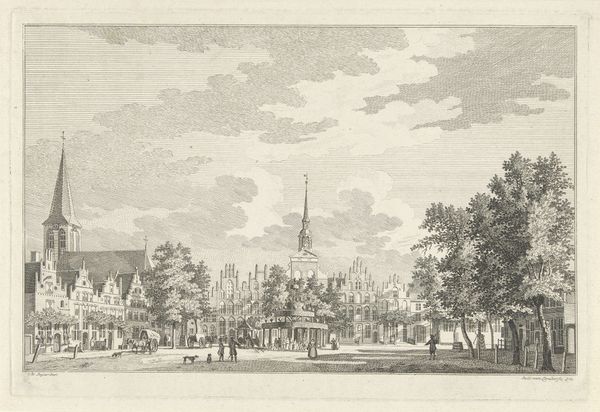
Dimensions: height 180 mm, width 275 mm
Copyright: Rijks Museum: Open Domain
Curator: This delicate engraving presents the "View of the Abbey of Egmond" by Jan Frederik Christiaan Reckleben, dating back to 1859. The romantic landscape, rendered in meticulous detail, offers a glimpse into 19th-century Dutch scenery. Editor: My first thought? It's so... ordered. A meticulously structured composition, with the abbey taking center stage. The eye is led around carefully, as if to say that nothing must be out of place, and nobody should disturb the peace. Does this resonate with how you read this artwork? Curator: Absolutely. Reckleben seems to be embracing the Romantic era's focus on feeling and an idealized view of the past and rural landscapes. We need to also think about Dutch identity at that time; after all, monastic life was not favored or supported as it was during the Middle Ages, which means we are dealing with a historical point of view that also subtly brings religion to the forefront. The level of detail reminds me of those panoramic views that emphasized human interaction with nature, though here it is clearly domesticated nature in a world still coming into view, and its significance as a site of collective memory. Editor: The presence of tiny human figures scattered throughout emphasizes this idea of being-in-the-world. They feel intentionally diminutive against the backdrop of the towering abbey. Are they staff of the monastery? Farmers, or are they families who are merely on their way to or from a nearby village? This positioning creates a hierarchical relationship; as if humanity’s purpose and function must bend to that of divine will. What does it represent that this social order of humans is situated alongside animals playing in the field? Is the artist intentionally presenting nature and civilization side by side as separate-yet-related components? Curator: The Abbey itself—standing proudly within the low-lying landscape—certainly dominates the narrative. Reckleben created not merely an architectural representation, but rather evoked its role as a cultural, and indeed, spiritual anchor within a changing society. While these images provided documentation and promoted tourism, the underlying emotional content reveals the enduring strength and spiritual resilience these places offered and maintained for future generations. Editor: Looking at it again, the meticulous detail feels like a preservation effort, a way of fixing the abbey and its surrounding landscape in time, resisting the relentless march of modernity. A subtle act of resistance through representation, perhaps? Curator: I think you are spot-on. Editor: Ultimately, Reckleben’s image inspires a gentle, perhaps melancholic contemplation on our relationship with the places we live, what our role is in supporting our land and society, and the way that civilization will continue marching forward.
Comments
No comments
Be the first to comment and join the conversation on the ultimate creative platform.
